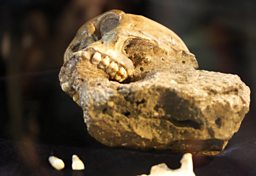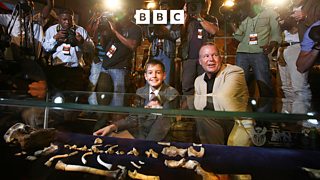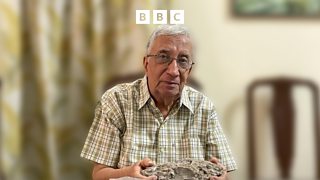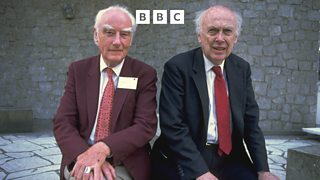The boy who stumbled upon a new species of human ancestor
Matt Berger was just nine years old when he made an unwitting discovery whilst chasing his dog.
What he found transformed our understanding of human evolution.
Fifteen years later, he shared his reflections on the moment that captured the public's imagination with Vicky Farncombe of ���˿��� World Service's Witness History.
The fossil-hunting father and son
Matt Berger grew up as sidekick to his father Lee Berger, an adventurous paleoanthropologist – a scientist who studies the fossils of human ancestors.
As a child, Matt would regularly be taken along on his dad’s field trips. But in the early 2000s, Lee was seriously down on his luck.
"One of the biggest paleoanthropologists in the world put out an article saying 'there are no more hominid fossils in Africa to discover – we found them all, stop exploring!'" said Matt.
"And that hurt the industry a lot and stopped a lot of funding for exploration."
Tracking down caves on Google Earth
Hoping to turn his fortunes around, Lee Berger started using a then-new platform called Google Earth to spot overlooked caves that might contain fossils.
"He realised with Google Earth, he could actually find caves from the sky," Matt explained.
The breakthrough moment
On 15 August 2008, Lee Berger together with Matt and their dog Tau travelled to the Malapa Cave area near Johannesburg in South Africa, to try their luck.
The cave spot is a World Heritage Site, popularly known as the 'Cradle of Humankind' because it contains abundant signs of human evolution.
Lee had already scoped the precise location he wanted to explore on Google Earth.
"We got to the edge of this hole," recalled Matt. “Really just a hole in the ground, five metres by five metres, not a huge cave that most people would imagine. And my Dad said, 'OK Matt, go find fossils.'”
"My dog started running away from the site. I started following him and I tripped on a log, and as I was getting myself up and dusting myself off, I noticed a little fossil in a rock on the side of this path."
Rock and awe
Matt Berger called his father over to take a look. He swiftly realised it was the fossilised collarbone of a hominid, a group of great apes that includes humans and their close ancestors.
"We were all kneeling around this rock, just in awe," said Matt Berger. "I didn't really know what was happening because I'd never found a hominid. I was just there for fun. But my dad was so excited, and so obviously that made me excited.
"As we're admiring this rock and looking at it, we turn it over, and on the backside is a jaw with teeth of a hominid sticking out. And so that's when we knew this was going to be a significant find, because finding a single piece is already a huge deal – finding two in the same block, knowing that they could be from the same individual, which would lead to a partial skeleton, was almost unheard of."

A whole new species
It turned out that Matt Berger had chanced upon a previously unknown ape-like species, Australopithecus sediba, that lived almost 2 million years ago.
Around two weeks later, Matt Berger's father returned with colleagues to excavate the site, and made further finds that enabled them to piece together partial skeletons of one adult female and one young male.
Some experts think the species could be a direct ancestor of modern humans, or a close relation.
And it’s helped shed fresh light on human evolution.
"We have the first articulated ankle that gives us information about walking that's totally surprising," explained Matt Berger's father, Lee. "We have the first undistorted pelvis that's ever been discovered in the entire early hominid record. We have the most complete hand from one individual from any species of early human ancestor ever discovered – and it's a lot like ours."
The discovery is also credited with rejuvenating palaeoanthropology, paving the way for further finds across the Cradle of Humankind in subsequent years.
To hear the full story, listen to Witness History: The boy who discovered a new species of human ancestor
More science stories from history
-
![]()
Dinosaur in court
A dinosaur skeleton became the subject of both a restraining order and a court case in 2012
-
![]()
Tamoxifen: Breast cancer ‘wonder drug’
How tamoxifen went from a failed contraceptive pill to a breast cancer wonder drug
-
![]()
First dinosaur eggs identified in India
Professor Ashok Sahni made the first ever discovery of dinosaur eggs in India
-
![]()
Discovering the secrets of DNA
James Watson and Francis Crick published their discoveries about DNA in 1953





